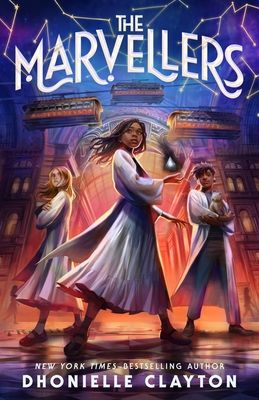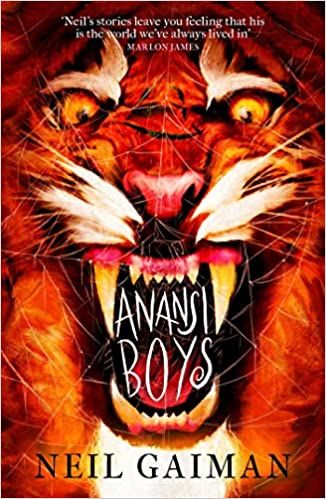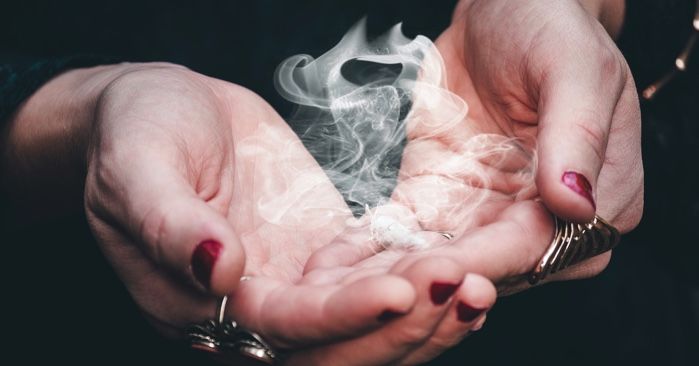What do we remember about our favourite fantasy stories? Apart from the compelling plots and characters, we’re most likely to fall in love with a fantasy novel because of strong worldbuilding, whether that’s the creation of a fascinating fictional society, the inclusion of fun legendary creatures, or, in many cases, the construction of an interesting and thought-provoking magic system. Throughout the years of fantasy dominating as a genre, there have been many different types of magic systems, some well-explained, with strong structures, while others fall into the “no rules, just vibes” category. But what makes for the best magic systems in fantasy, while others are disappointing?
Many magic systems are based on concepts or ideas that exist in the real world. The wizards of Discworld devote years at university to learning spells from ancient times (or, in later years, simply enjoying big dinners and doing very little real magic). Some magic systems are based on maths, while others draw on crafts such as sewing or weaving. Some fantasy authors have created magic systems based on music, while others have taken a religious slant to their characters’ magical practices, having them work closely with gods to cast spells in their worlds. A good magical system is consistent, not too overpowered (even magic users need to struggle to make a story interesting), and is interesting enough to stick in the reader’s mind long after they’ve finished the story. Here are some of the best magic systems in recent — and not-so-recent — fantasy literature.

The Marvellers by Dhonielle Clayton
The Marvellers has some standout worldbuilding, including cities in the sky and travel by airship, but one of my favourite things about Dhonielle Clayton’s first middle-grade fantasy story is the magic system she creates — or rather, magic systems, plural. There’s Marveller magic, which is based around the five senses; some Marvellers perform their magical feats using blends of spices, while others use sound to weave spells. However, there is also Conjuror magic, a different kind of magical system that can involve working with animals, herbs, or the dead. Ella, the heroine of the story, comes from a Conjuror family and is the first person from a Conjuror background to train in Marveller magic — something she is determined to master while still honouring her Conjuror roots. Clayton’s focus on sensory magic brings the story alive and makes the magic systems feel real to the reader; it’s easy to imagine your own favourite hobby corresponding to an aspect of magic explored in The Marvellers.
Fun fact: If you’re an avid reader of middle grade and YA fiction, you might recognise some of the Marveller teachers’ names — many of Clayton’s literary colleagues have cameos in her story.

Sabriel by Garth Nix
Is Sabriel a classic now? I think it is. I’m old. First, in The Old Kingdom series by veteran fantasy writer Garth Nix, Sabriel follows the titular character, the latest in a long line of Abhorsens — magicians who use bell chimes to make sure that the dead stay dead. Sabriel has been separated from her father, the current Abhorsen, for some time, and so she must teach herself the magic system that binds the dead and stops them from causing havoc in the world of the living. As Sabriel learns how to use the bells, she walks the line between the living and the dead, almost tripping now and then but always keeping true to the magic.
Fun fact: If you love smartarse talking cats, you’ll love Sabriel’s sidekick, Mogget.

The Very Secret Society of Irregular Witches by Sangu Mandanna
Some magic systems are very rigid, full of rules and regulations — others are “no structure, just vibes.” That’s the kind of magic system you get in The Very Secret Society of Irregular Witches, where magic exists as a semi-sentient force that gathers in glittering waves around witches. In this fantasy world, magic loves being used, and it loves its users — which can sometimes lead to it becoming a little overenthusiastic, something that occasionally causes high-stakes magical accidents. The idea of magic being like an overpowered and slightly badly-trained puppy is a concept that I love, and combined with the secretive world of the witches, it makes for a cute and cosy magical story.
Fun fact: Mika Moon may have a particular talent for teas and potions, but, like Mary Poppins and Disney’s Merlin before her, she also has a knack for stowing a huge amount of possessions in a ridiculously small space. Even Mary couldn’t fit a full koi pond in her handbag, but Mika manages to squeeze one into her car.

Anansi Boys by Neil Gaiman
If you have a parent who’s a god, you’re always going to be a little bit magic — unless you’re Charlie Nancy (or so he thinks). When his father dies, Charlie discovers that he was actually the trickster god Anansi. He also finds out that he has a brother, Spider, who got all the magical family traits. The two decide to swap lives, a decision that Charlie immediately regrets — but as he tries to solve the problem his decision has created, he ends up using a magic system that we see in many of Gaiman’s books, based around the idea of knowing yourself, naming yourself, and altering reality through words and belief.
Fun fact: Anansi Boys connects with the characters and universe established in American Gods, although it’s a great standalone read in its own right.

The Spell Tailors by James Nicol
I’m a sucker for cosy magical stories, particularly ones that combine magic and crafting. The Spell Tailors is a standalone middle grade fantasy story by the author of The Apprentice Witch trilogy and follows a young boy named Hen, part of a family of magical tailors who create garments with spells attached. Do you want a raincoat with a water-repelling charm or a summer shirt that will keep you cool on the hottest days of the year? Then the Danelli spell tailors are the magicians for you. The story centres around Hen’s discovery of a new kind of spell stitch, one that allows him to weave memories into clothing — with unexpected results. There’s a magic to real-world crafting, so having a magic system based around sewing seems a logical step.
Fun fact: Central to the magic of the spell tailors is thread made from the wool of a ridiculously cute fantasy creature called a schleep, which I personally wish was real.

The Dragon Republic by R. F. Kuang
Not all magic systems are cosy. In the second book in R. F. Kuang’s Poppy War trilogy, we see Rin and the rest of the Cike — an elite group of magical soldiers — use their talents to continue fighting a brutal war. Rin, who has embraced the destructive magic of the Phoenix god to strike back against her country’s enemies, is feeling the personal cost of her decision and soon becomes unable to function without opium to temper the fiery rage that burns within her. The rest of the Cike also channel gods in order to wield their powers, a highly risky form of magic that always comes with a price — because when you use a god, the god also uses you. The magic system in The Dragon Republic drives home how power is always dangerous and that any action, no matter how noble the intention, will always have unexpected consequences.
Fun fact: “Fun” is rarely the right word for a world as brutal as that of the Poppy War books, but fans of Avatar the Last Airbender will completely understand the description of main character Rin as partially inspired by the character Azula.

The World We Make by N. K. Jemisin
In this second installment in N. K. Jemisin’s speculative fiction series about cities coming to life, the avatars of the different boroughs of New York are learning how to manage their power. Jemisin develops the magic system that she created in The City We Became, and we see the different boroughs able to pull on aspects of Brooklyn, the Bronx, or Queens, as well as working together to pool their magic and become even more powerful. This magic system sees previously human avatars become parts and representatives of their cities and use their knowledge of their boroughs and the people who live in them to work magic and defend the realm against invasion from cosmic horror entities.
Fun fact: We see many more awakened cities in this conclusion to the duology, and I love this dive into the expanded Great Cities world. It’s fun to imagine the person your own city would choose as their avatar and what aspects of your neighbourhood they’d use.

The Gifts That Bind Us by Caroline O’Donoghue
In the sequel to All Our Hidden Gifts, the four friends — Maeve, Roe, Lily, and Fiona — have come into the powers that they gained in the first book. Maeve is able to read minds, Lily can use electricity, Fiona is a healer, and Roe can manipulate machinery, their magic triggered by the appearance of the Housekeeper tarot card. The magic system in this trilogy involves some out-of-the-box thinking: for example, Lily has electricity magic because she uses a hearing aid, and in the previous book, she became part of the local river (long story). The Gifts That Bind Us looks at how magic is honed, how it can wax and wane, and how it can be shaped through lateral thinking.
Fun fact: The concept of the Housekeeper tarot card originated in a song that Caroline O’Donoghue wrote long before she began the series.

Star Eater by Kerstin Hall
Some magic systems can be hierarchical, and some can be gruesome; in Star Eater, we get a taste of both. The book features a group of cannibalistic priestesses who eat the flesh of their mothers in order to gain magical powers, creating a form of magic known as lace. The cannibalism isn’t the only macabre part of the story, but it’s certainly the most striking.
Fun fact: Again, not so much “fun,” but Star Eater also features zombie-like creatures known as Haunts; these are men that the magical cannibalistic nuns have had sex with, causing them to lose their own humanity.

Circle of Magic series by Tamora Pierce
Tamora Pierce is a legendary fantasy writer, and while she’s probably best known for her Song of the Lioness series, I’ve always had a soft spot for the Circle of Magic books, in part because of their fascinating magic system. In this world, there are two types of mages: academic mages, who hone their magic through book learning, and ambient mages, who draw power from more pragmatic crafts and skills. The series follows four children who discover they have ambient magic, including one of my favourite fantasy characters, Sandry, a girl who discovers that she has magic related to sewing, fabric, and thread. Sandry counters the (boring and overdone) fantasy trope of the girl who hates feminine-coded crafts in favour of magic or fighting ability — instead, she shows that fabric crafts can be powerful and valuable, especially when combined with magic. It’s hard to argue with someone who can use an enemy’s own clothes to incapacitate them.
Fun fact: Sandry’s foster-sibling have their own fascinating ambient magic: we have Daja, a smith-mage who can handle molten metal; Briar, a plant mage who talks to anything green; and Tris, a grumpy weather-mage who stores rain and thunderstorms in her braids.
If you’re interested in music as a system of magic, try our list of Music Magic in Fantasy Books. For recommendations that focus on language-based magic systems, try Words of Power: 8 Fantasy Books with Word-Based or Book-Based Magic Systems.

